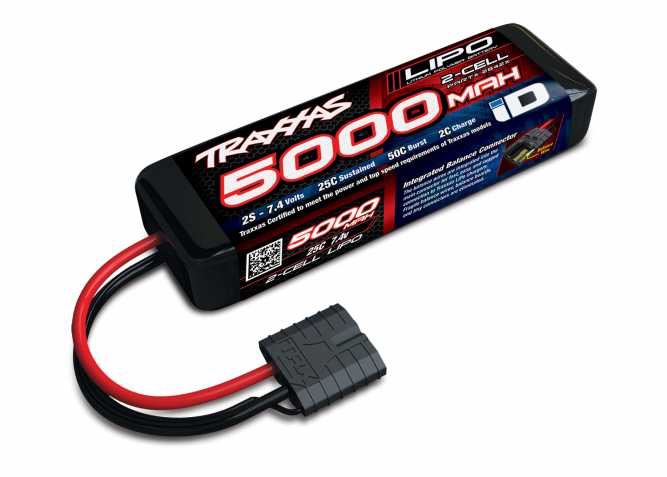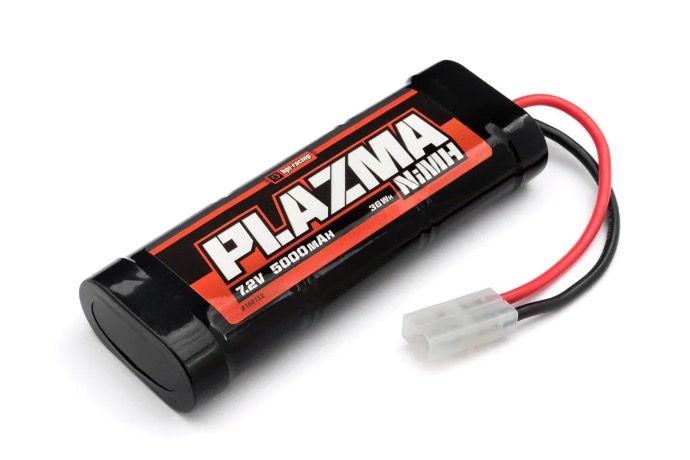The RC hobby is full of exhilarating outdoor adventures, high-speed races, and even precision control drifting, all powered by one unsung hero: the battery. This is the power source of all the fun you will have with your RC. But when it comes to choosing the right power source for your RC vehicle, you're often faced with the age-old dilemma - LiPo or NiMH? In this guide, we'll take a deep dive into the heart of the matter, exploring the characteristics, advantages, and considerations of both LiPo and NiMH batteries.
Types of Batteries:
- LiPo (Lithium Polymer) Batteries: LiPo batteries are the speed demons of the RC world. They are known for their high energy density, lightweight design, and excellent power-to-weight ratio. LiPos deliver a punch when it comes to high-speed applications and are favored by racers and speed enthusiasts. They come in various cell configurations, including 2S, 3S, 4S, and beyond, indicating the number of cells and voltage.
- NiMH (Nickel-Metal Hydride) Batteries: NiMH batteries are the dependable workhorses. They are user-friendly, reliable, and an excellent choice for beginners. NiMH batteries have a lower energy density compared to LiPos but provide a balance of runtime and performance. They are often used in entry-level RC vehicles and are known for their long cycle life.
Voltage, Capacity, Size, and Discharge Rating:
- Voltage: This is the energy per unit charge available to move electrons between two points in an electrical circuit. It's analogous to the pressure in a water pipe—higher voltage signifies a greater "push" or potential difference that drives electric charges (electrons) through a conductor, from a point of higher potential (positive terminal) to a point of lower potential (negative terminal). LiPo batteries have a nominal voltage of approximately 3.7 volts per cell. NiMH batteries, on the other hand, provide around 1.2 volts per cell. The total voltage affects the speed and power of your RC vehicle.
- Capacity (mAh): Battery capacity is measured in milliampere-hours (mAh) and indicates the energy storage capacity. Higher capacity batteries offer longer runtime and are heavier since they tend to be larger in size.
- Size: Batteries come in various physical sizes and configurations, so it's important to select one that fits your RC vehicle's battery compartment.
- Discharge Rating (C-Rating): The C-rating refers to a measurement that tells you how quickly you can safely draw power from the battery, mostly in the context of LiPo Batteries. It represents the discharge capability or the maximum safe continuous discharge rate of a battery. A higher C-rating is essential for high-performance applications like RC vehicles or drones that require quick bursts of power or high current draw. However, it's important to ensure that the device's power requirements align with the battery's C-rating to prevent overheating or damage to the battery.
Types of Connectors and Their Compatibility:
- Connector Types: RC batteries come with various connector types, including Deans connectors, Traxxas connectors, XT60 connectors, and more. The choice of connector is often influenced by the manufacturer of your RC vehicle and its ESC (Electronic Speed Controller).
- Compatibility with ESC: Ensuring that your battery's connector matches the ESC connector is vital for a seamless connection. However, using an adapter can bridge any gaps in compatibility. Once the ESC is happy with the power from the battery, it safely passes it on to the electric motor to get your RC going.

Charging & Discharging:
- Charging Batteries: RC batteries require compatible chargers set to the appropriate voltage and charge rate. Overcharging or charging with incorrect settings can damage the battery and pose a safety risk to you and your surroundings. Since LiPo batteries typically consist of multiple cells connected in series to increase voltage, a LiPo Balance Connector is designed to facilitate the balance charging process and ensure each cell within the battery is charged evenly. The balance connector features multiple wires, each with a connection to an individual cell within the battery pack. These wires are usually smaller and shorter than the main power wires used to connect the battery to devices.
- Discharging Batteries: Monitoring the voltage during use is essential to prevent over-discharging, which can cause harm to the battery. Some chargers have discharge functions to safely lower the battery's voltage when needed.
Maintenance and Safety Considerations:
- Maintenance: Proper care of RC batteries involves storing them at the correct voltage, balancing the cells in LiPo batteries, and using a charger designed for your RC batteries. Regularly checking for signs of damage or swelling is also essential to mitigate the risk of fire.
- Safety Considerations: Safety is paramount, especially with LiPo batteries. Following safety guidelines, avoid overcharging, use fireproof bags/containers for storage and charging, and never puncture or damage batteries.
With great power comes great responsibility, and in the RC hobby, your choice of battery can significantly impact your vehicle's performance. Whether you opt for the high-octane thrills of LiPo or the reliability of NiMH, understanding the characteristics, advantages, and maintenance of each battery type is key to a successful and enjoyable RC experience. So, power up your RC, and may your batteries always be charged and ready for the next adventure! 🏎️🔋⚡


Unraveling the Powerhouse: LiPo and NiMH Batteries in the RC Hobby